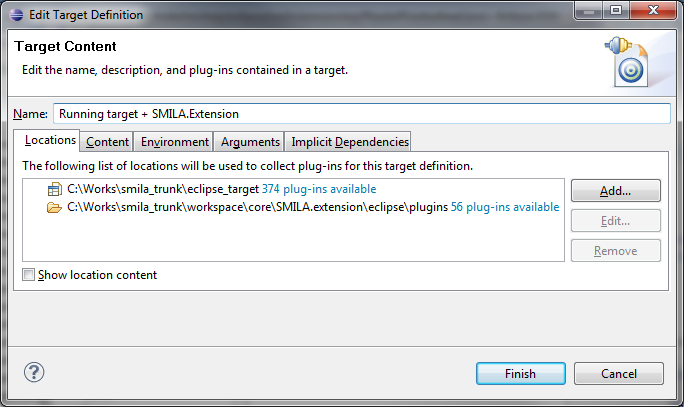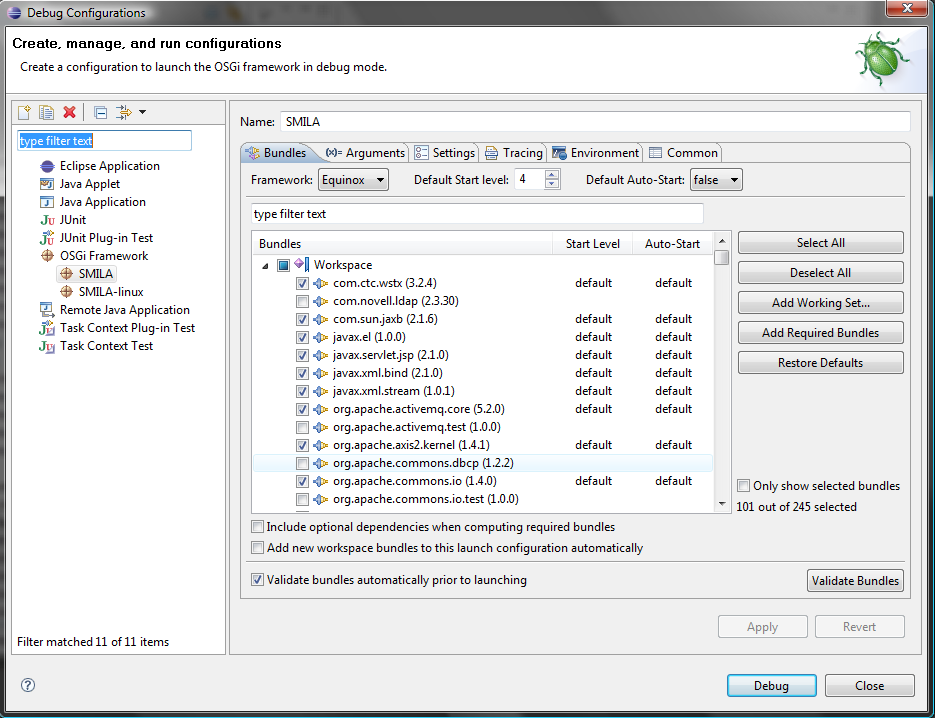Notice: This Wiki is now read only and edits are no longer possible. Please see: https://gitlab.eclipse.org/eclipsefdn/helpdesk/-/wikis/Wiki-shutdown-plan for the plan.
SMILA/Documentation/HowTo/Howto set up dev environment
Contents
Setup an Eclipse instance/installation for SMILA
Set-up for SMILA developers
Installed Eclipse and delta-pack
If you still have not installed an eclipse and/or a delta-pack, you may download it from:
- Eclipse download location: http://www.eclipse.org/downloads/
- Delta-pack download location: http://download.eclipse.org/eclipse/downloads/
Checkout SMILA sources from Eclipse svn
You may check out our sources from:
http://dev.eclipse.org/svnroot/rt/org.eclipse.smila/
Import sources into Eclipse
If you don´t check out our sources into Eclipse, you have to import the sources into Eclipse see below:
Click File --> Import --> General --> Existing Projects into Workspace --> Next --> Select root folder of local trunk --> Finish
Define target platform
The goal of the following set up is to use Eclipse installation as target platform with adding the plug-ins from SMILA.extensions folder.
- Click Window --> Preferences --> Plug-in Development --> Target Platform
- Click Add... --> Select File System --> Click Next --> Click Add --> Select SMILA.extension/eclipse/plugins folder under local trunk
Launch SMILA in Eclipse
There is a folder SMILA.launch located in our trunk. This folder contains a launch configuration file for Eclipse. With this file you have the possibility to start SMILA in Eclipse. Follow the steps below:
- Click Debug --> Debug Configurations and expand OSGI Framework
- Select launch file for your environment and press Debug
-
- If everything is started correctly, you will get an output in the Eclipse Console like below:
-



